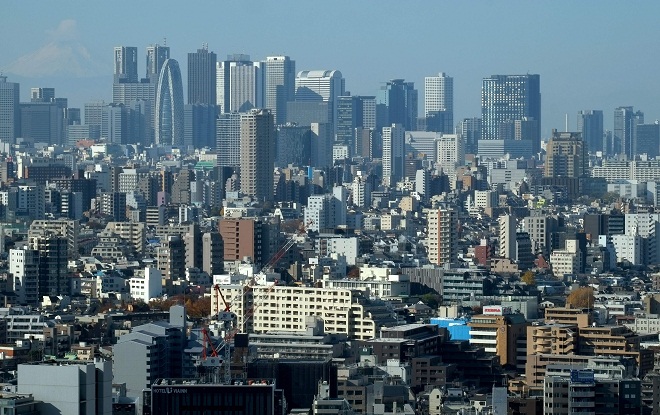Greater Tokyo sees net population inflow for 22nd year
January 30, 2018
Tokyo- The number of people who moved into the greater Tokyo area exceeded that of people moving out by 119,779 in 2017, marking a net population inflow for the 22nd straight year, the internal affairs ministry said Monday.
The net inflow into the eastern Japan area--Tokyo and the three neighboring prefectures of Saitama, Chiba and Kanagawa--increased 1,911 from the previous year. In 2016, the inflow fell for the first time in five years.
An official of the ministry's Statistics Bureau said that young people aged 15 to 29 accounted for most of the inflow into the greater Tokyo area in 2017, suggesting that the migration of young people to the region continued for university study and work.
The government plans to submit a bill to regulate the number of students enrolled at universities in central Tokyo's 23 wards and introduce a subsidy program to revitalize universities outside major cities. But it is uncertain whether the measures will help rectify the concentration of people in the Tokyo area, analysts say.
Meanwhile, the Osaka and Nagoya areas suffered net population outflows for the fifth consecutive year, with drops of 8,825 and 4,979, respectively.
The Osaka area is composed of the western prefectures of Osaka, Kyoto, Hyogo and Nara, while the Nagoya area comprises the central prefectures of Gifu, Aichi and Mie.
Of Japan's 47 prefectures, seven saw net population inflows, namely Tokyo, Chiba, Saitama, Kanagawa, Fukuoka, Aichi and Osaka.
A total of 40 prefectures suffered net outflows. Fukushima, which was hit hard by the March 2011 earthquake and tsunami, marked the largest net decrease, with a fall of 8,395, followed by Hyogo, Hokkaido and Niigata. Including Fukushima, Hiroshima and Kyoto, 23 prefectures saw sharper net declines than in the previous year.
Iwate and Miyagi, which also suffered severe damage from the March 2011 disaster, saw net population outflows of 4,361 and 1,262, respectively.
By municipality, central Tokyo's 23 wards marked the largest net increase, with 61,158, followed by Osaka, at 10,691, Sapporo, at 8,779, and Fukuoka, at 8,678. Chiba Prefecture cities along the Tsukuba Express railway line launched in 2005, such as Nagareyama and Kashiwa, also saw large net increases.
But 1,311 cities, towns and villages suffered net outflows, with Kitakyushu marking the largest net decline of 2,248. Kitakyushu saw the largest net drop for the fourth straight year. Jiji Press
Latest Videos
- THE UNTOLD STORY EXPERT INSIGHTS INTO THE UKRAINE
- NEGOTIATING A NEW ORDER US RUSSIA TALKS ON UKRAIN
- Ukraine: A Pawn in the Geopolitical Game? Will Trump Intervene?
- US VP VANCE CRITICIZES EUROPEAN DEMOCRACIES AT MUNICH SECURITY CONFERENCE
- UNCOVERING THE WEB OF DECEIT: CIA INFILTRATION OF THE MEDIA
- SHIFTING SANDS: TULSI GABBARD’S CONFIRMATION AND THE EVOLVING GLOBAL LANDSCAPE
- FAUCI SCANDAL: A THREAT TO GLOBAL HEALTH AND DEMOCRACY






